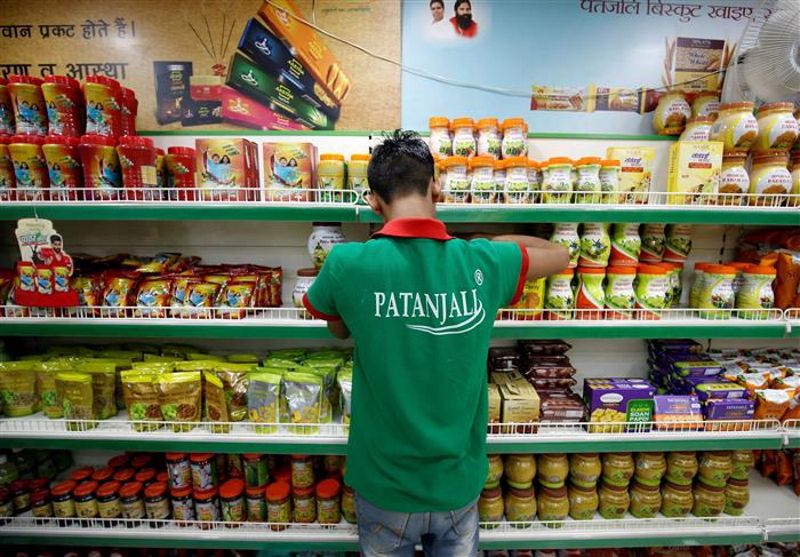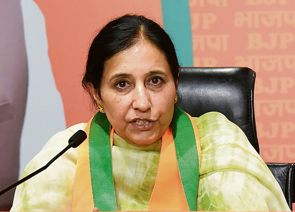
Patanjali Ayurved has finally issued an “unconditional public apology” for its disobedience of the directions and orders of the Supreme Court, through large advertisements, but is it enough? - Reuters file photo
Pushpa Girimaji
Patanjali Ayurved has finally issued an “unconditional public apology” for its disobedience of the directions and orders of the Supreme Court, through large advertisements, but is it enough?
The apex court will obviously deliberate on this issue at its next hearing, but for consumers, who have been misled for years, nothing short of a series of court-directed ‘corrective advertisements’ to set right the erroneous impressions created by the company’s campaigns and advertisements will do. Consumers have a right to information and informed choice and it is imperative that Patanjali informs, through corrective advertisements, that it advertised its products despite knowing fully well that it was violating the Drugs and Magic Remedies (Objectionable Advertisements) Act and the Drugs and Cosmetics Act and also admits the misrepresentations. The prominence and duration of such advertisements should correspond to the original ones.
Such advertisements would not only hold the company accountable for its misdeeds, but also send out a warning to all those businesses who unabashedly peddle lies and half-truths about their products and services, at the cost of consumers’ health and safety. In fact, such misrepresentations strike at the very root of the citizen’s fundamental right to life and flowing from it, right to health, safe food and drugs.
The concept of corrective advertisements may have its share of naysayers, particularly among businesses, but I have always been a strong votary of corrective advertisements as the most effective legal remedy for false and misleading advertisements. First, it cures the erroneous impression created by such advertisements in the minds of consumers. Second, if used effectively, it can be a very strong deterrent against misrepresentations because the perpetrator is forced to invest heavily in advertisements that actually expose him and hold him accountable for misleading the public. Third, even when a false advertisement is pulled down, there is always a time lag between its appearance and its withdrawal, by which time it would have already conveyed the misinformation.
It’s for this reason that every law, regulation, irrespective of the sector, dealing with false and misleading advertisements should have a provision for corrective advertisement and it must be enforced extensively and effectively. I put particular emphasis on the enforcement because having successfully pushed for the corrective advertisement provision in the Consumer Protection Act as well as the Food Safety and Standards (Advertising and Claims) Regulations, I am extremely disappointed that most often, the provision is ignored . Even when applied by consumer courts, there is a lack of understanding of its objective and therefore, the corrective advertisement does not serve the intended purpose.
One of the best examples of corrective advertisements can be found in the directions of a federal court in the United States in what is commonly known as the Civil Racketeering lawsuit against tobacco companies. Accordingly, in 2017, major tobacco companies had to issue corrective statements as full-page advertisements in at least 50 newspapers around the country once a week for one year and also broadcast them as 30 and 45-second prime time shots on major TV networks. The corrective statements had to refer to the manipulation of cigarette design and composition to enhance nicotine delivery, adverse health effects of smoking, addictiveness of cigarette smoking and nicotine, absence of health benefits from smoking low tar, light, ultra-light, mild and natural cigarettes, and adverse health effects of exposure to secondhand smoking.
Patanjali’s promotion of its drugs makes a strong case for corrective advertisements because the company has constantly flouted laws with impunity and misled consumers for years. It cocked a snook at the enforcement authorities. It even tried that with the Supreme Court!
The Drugs and Magic Remedies (Objectionable Advertisements) Act prohibits advertising and promotion of any drug for the diagnosis, cure, mitigation, treatment and prevention of any disease, disorder or condition specified in the Schedule of the Act. And the Schedule covers almost all diseases, including diabetes, high or low blood pressure, glaucoma, and goitre. Yet, Patanjali advertised drugs for these diseases consistently, despite notices from the Uttarakhand licensing authority, following complaints.
The law also prohibits misleading advertisements, and many of its advertisements, forwarded by the Union Ministry of Consumer Affairs to the Advertising Standards Council of India (on complaints from consumers), were found to be misleading. And such infractions have gone on for years.
In fact, Patanjali’s belligerence also speaks very poorly of the enforcement agencies and calls for strict action against officials who failed to act suo motu, and also on complaints. It also calls for more transparency in the working of enforcement agencies and regular scrutiny of their work through independent agencies.
Join Whatsapp Channel of The Tribune for latest updates.




























